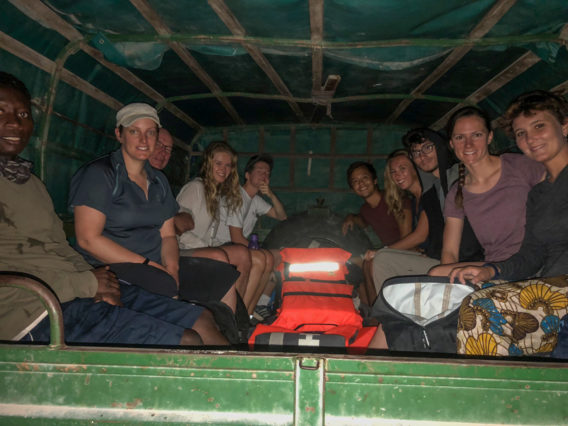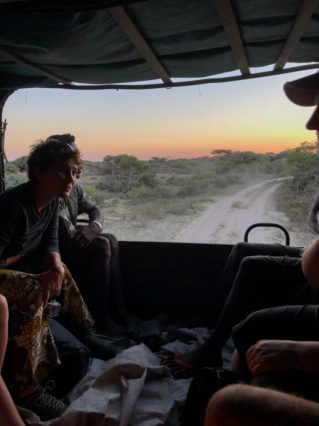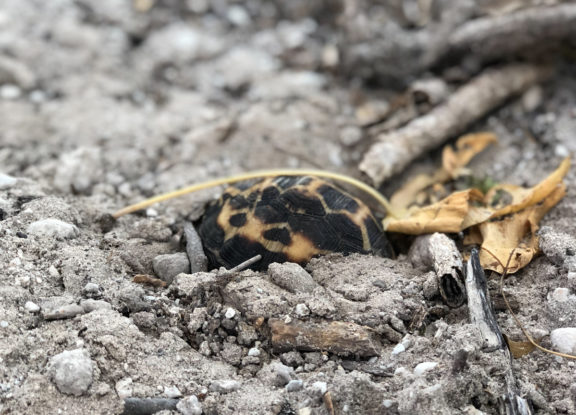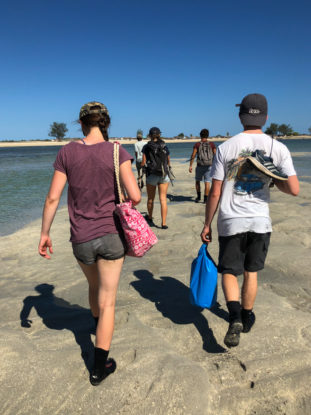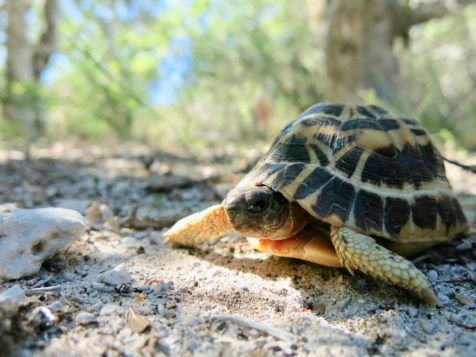
Spider tortoise (Pyxis arachnoides) | Photo: Joe Sharman
A fascinating fact about Madagascar, approximately 90% of all plant and animal species found there can’t be found anywhere else in the world. An example of one such species is the spider tortoise (Pyxis arachnoides), which is endemic to southwest Madagascar, and which Blue Ventures (BV) has been monitoring since November 2010. Sadly, this fascinating species is in decline, and is now listed as ‘critically endangered’ on the IUCN Red List.
Southwest Madagascar has been suffering from three years of drought, making it exceedingly difficult to monitor spider tortoises, as they tend to emerge from the sand after rain – when food and water is in greater supply.
The rainy season runs from November to April, so during those months BV would normally take every volunteer group to the spiny forest to monitor the changes and trends in spider tortoise populations. Unfortunately, due to the lack of rain there hadn’t been a single data collection visit carried out until my expedition in April, so we were the first volunteers this season lucky enough to do it!
Today there are no more than 665,000 spider tortoises left in the wild.
Interestingly, we have not been allowed to share the location of our transects, and the geotags were removed from all photos taken. This is due to the increase in illegal trading of spider tortoises for food and the international souvenir and pet trade. Breeding locations have previously been found, and the tortoises illegally removed from their natural habitat.
The data collection plan was for us to complete five transects, each of which takes about an hour. We left at 6am, as our anonymous locations were a decent drive and a short pirogue sail from BV’s base in Andavadoaka. Getting to watch the sun rise from the back of the truck made the early start totally worth it.
The five transects we were surveying all looked very similar – arid spiny forest. Every volunteer was paired with a community member, which we initially didn’t think was necessary, before quickly learning the error of our ways – the tortoises were REALLY hard to find! In fact, the volunteers only managed to spot a couple of spider tortoises, the rest were located by community members, who had experience in identifying likely hiding places. The tortoises usually hide underneath the bushes and often have their shells partially submerged in the sand, making them super difficult to spot.
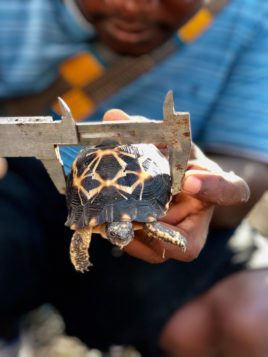
Measuring a spider tortoise
A cry would go up every time a spider tortoise was spotted, and those near enough to hear would gather round to see the tortoise and record size measurements, age and sex. We would also leave a tiny red dot on the side of their shell, to mark it as already surveyed.
We ended up staying for about half the time of previous volunteer groups, because we simply could not find any more spider tortoises! Where the previous volunteer groups have managed to record more or less a hundred of the little creatures, we only recorded 22.
The tide had come in while we worked, so on our way back to the truck we ended up walking through knee high water, taking care not to step on any sea urchins!
The drop in spider tortoise numbers could be due to changing weather patterns, habitat destruction, hunting for food, or the increasing illegal trade. With more time and more data, hopefully the reasons will become clearer, and conservation plans can be made.
Despite recording low numbers of tortoise, we were happy and proud to have been able to contribute to the monitoring of such an incredible endemic species.
Join us in Madagascar!
All photos in this blog were taken by Ieva Kazakeviciute unless otherwise specified in the caption.
Read more from Ieva on her instagram page where she gives useful tips on sustainable life choices!


